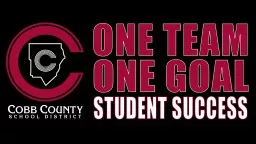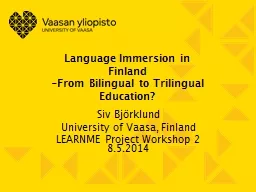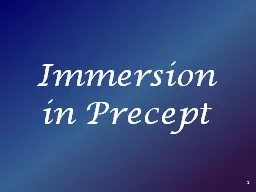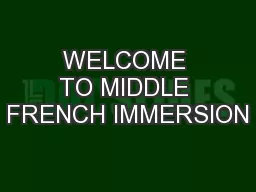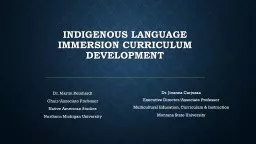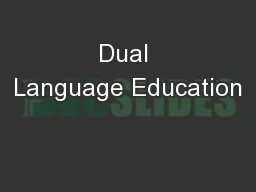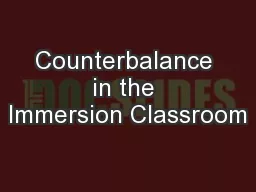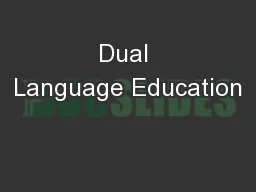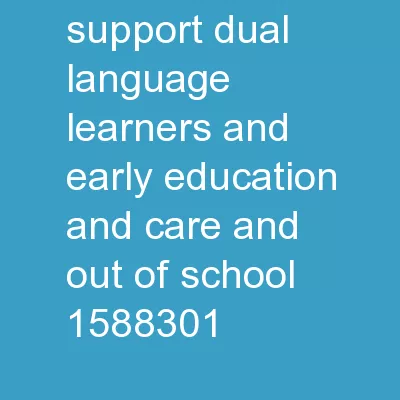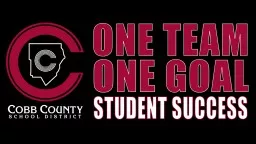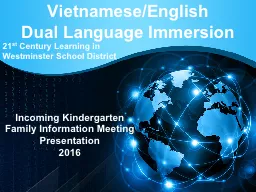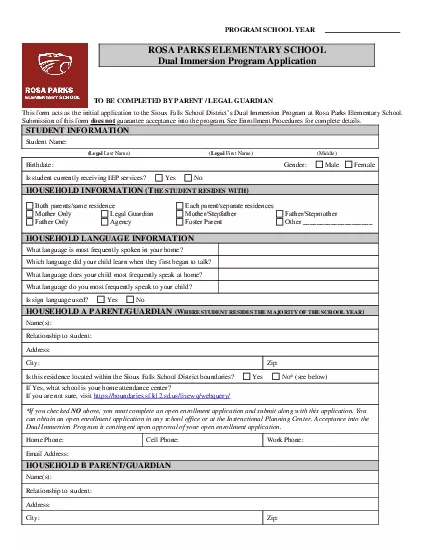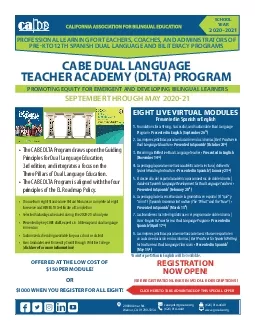PPT-Dual Language Immersion
Author : alida-meadow | Published Date : 2019-02-13
Nickajack Elementary School Gregory Barfield EdD Dual Language Immersion Program Specialist GregoryBarfieldcobbk12org Tonights Topics How does language proficiency
Presentation Embed Code
Download Presentation
Download Presentation The PPT/PDF document "Dual Language Immersion" is the property of its rightful owner. Permission is granted to download and print the materials on this website for personal, non-commercial use only, and to display it on your personal computer provided you do not modify the materials and that you retain all copyright notices contained in the materials. By downloading content from our website, you accept the terms of this agreement.
Dual Language Immersion: Transcript
Download Rules Of Document
"Dual Language Immersion"The content belongs to its owner. You may download and print it for personal use, without modification, and keep all copyright notices. By downloading, you agree to these terms.
Related Documents

